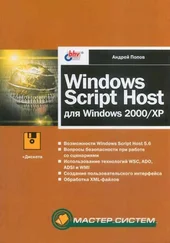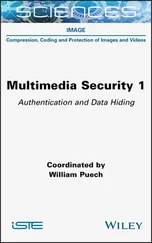The four partition records each define the first and last logical blocks that a particular partition uses on a disk:
■Each 16-byte MBR partition record begins with a 1-byte boot indicator. For example, a value of 0x80 identifies a bootable legacy partition. Any other value indicates that this is not a bootable legacy partition. This value is not used by UEFI.
■The boot indicator is followed by a 3-byte address identifying the start of the partition. At byte offset 4, there’s a 1-byte value that indicates the operating system type, which is followed by a 3-byte value that identifies the end of the partition. These values are not used by UEFI.
■At byte offset 8, there is a 4-byte value indicating the first logical block of the partition, and this is followed by a 4-byte value indicating size of the partition in units of logical blocks. Both of these values are used by UEFI.
NOTE If an MBR partition has an operating system type value of 0xEF, firmware must add the UEFI system partition GUID to the handle for the MBR partition. This allows boot applications, operating system loaders, drivers, and other lower-level tools to locate the UEFI system partition, which must physically reside on the disk.
A protective MBR may be located at the first logical block on a disk that is using the GPT disk layout. The protective MBR precedes the GUID Partition Table Header and is used to maintain compatibility with tools that do not understand GPT partition structures. The purpose of the protective MBR is to protect the GPT partitions from boot applications, operating system loaders, drivers, and other lower-level tools that don’t understand the GPT partitioning scheme. The protective MBR does this by defining a fake partition covering the entire disk. When a disk has a protective MBR, the first 512 bytes on the disk have the following layout:
■The protective MBR begins with a 424-byte boot code, which is not executed by UEFI.
■The boot code is followed by a 4-byte disk signature, which is set to zero and not used by UEFI.
■A 2-byte separator follows the disk signature. This separator is set to zero and not used by UEFI.
■At byte offset 446, there is an array of four MBR partition records, with each record being 16-bytes in length. Only the first partition record-the protective partition record-is used. The other partition records are set to zero.
■Block 510 contains 0x55 and block 511 contains 0xAA. Block 512 is reserved.
The protective partition record reserves the entire space on the disk after the first 512 bytes for the GPT disk layout. The protective partition record begins with a 1-byte boot indicator that is set to 0x00, which indicates a non-bootable partition. The boot indicator is followed by a 3-byte address identifying the start of the partition at 0x000200, which is the first usable block on the disk.
At byte offset 4, there’s a 1-byte value set to 0xEE to indicate the operating system type as GPT Protective. This is followed by a 3-byte value that identifies the last usable block on the disk, which is the end of the partition (or 0xFFFFFF if it is not possible to represent this value).
At byte offset 8, there is a 4-byte value set to 0x00000001, which identifies the logical block address of the GPT partition header. This is followed by a 4-byte value indicating size of the disk minus one block (or 0xFFFFFFFF if the size of the disk is too large to be represented).
Disk types and file systems
In addition to a partition style, physical drives have a disk type, which is either basic or dynamic, as discussed later in the chapter in the section “Working with basic, dynamic, and virtual disks.” After you set the partition style and disk type for a physical drive, you can format free areas of the drive to establish logical partitions. Formatting creates a file system on a partition. Windows Server 2012 R2 supports the following file systems:
■FAT
■FAT32
■exFAT
■NTFS
■ReFS
With FAT, the number of bits used with the file allocation table determines the variant with which you are working and the maximum volume size. FAT16, also known simply as FAT, defines its file allocation tables using 16 bits. Volumes that are 4 gigabytes (GB) or less in size are formatted with FAT16.
FAT32 defines its file allocation tables using 32 bits, and you can create FAT32 volumes that are 32 GB or less by using the Windows format tools. Although Windows can mount larger FAT32 volumes created with third-party tools, you should use NTFS for volumes larger than 32 GB.
Extended FAT is an enhanced version of FAT. Technically, exFAT could have been called FAT64 (and is called that by some). Because exFAT defines its file allocation tables by using 64 bits, it can overcome the 4-GB file-size limit and the 32-GB volume-size limit of FAT32 file systems. The exFAT format supports allocation unit sizes of up to 128 KB for volumes up to 256 TB.
NTFS volumes have a very different structure and feature set than FAT volumes. The first area of the volume is the boot sector, which stores information about the disk layout, and a bootstrap program executes at startup and boots the operating system. Instead of a file allocation table, NTFS uses a relational database called the master file table (MFT) to store information about files.
The MFT stores a file record of each file and folder on the volume, pertinent volume information, and details about the MFT itself. NTFS gives you many advanced options, including support for the Encrypting File System, compression, and the option to configure file screening and storage reporting. File screening and storage reporting are available when you add the File Server Resource Manager role service to a server as part of the File Services role.
Resilient File System (ReFS) can be thought of as the next generation of NTFS. As such, ReFS remains compatible with core NTFS features while cutting noncore features to focus relentlessly on reliability. This means disk quotas, Encrypting File System (EFS), compression, file screening, and storage reporting are not available but built-in reliability features have been added.
One of the biggest reliability features in ReFS is a data integrity scanner, also called a data scrubber . The scrubber provides proactive error identification, isolation, and correction. If the scrubber detects data corruption, a repair process is used to localize the area of corruption and perform automatic online correction. Through an automatic online salvage process, corrupted areas that cannot be repaired, such as those caused by bad blocks on the physical disk, are removed from the live volume so that they cannot adversely affect good data. Because of the automated scrubber and salvage processes, a Check Disk feature is not needed when you use ReFS (and there’s no Check Disk utility for ReFS).
NOTE When you are working with File And Storage Services, you can group available physical disks into storage pools so that you can create virtual disks from available capacity. each virtual disk you create is a storage space. Because only NTFS and ReFS support storage spaces, you’ll want to keep that in mind when you are formatting volumes on file servers. For more information about storage spaces, see “Standards-based storage management” in Chapter 2.
You use the Disk Management snap-in for the Microsoft Management Console (MMC) to configure drives. Disk Management makes it easy to work with the internal and external drives on a local or remote system. Disk Management is included as part of the Computer Management console. You can also add it to custom MMCs. In Computer Management, you can access Disk Management by expanding the Storage node, and then selecting Disk Management. Alternatively, you can enter diskmgmt.mscat the Everywhere prompt, and then press Enter.
Читать дальше






